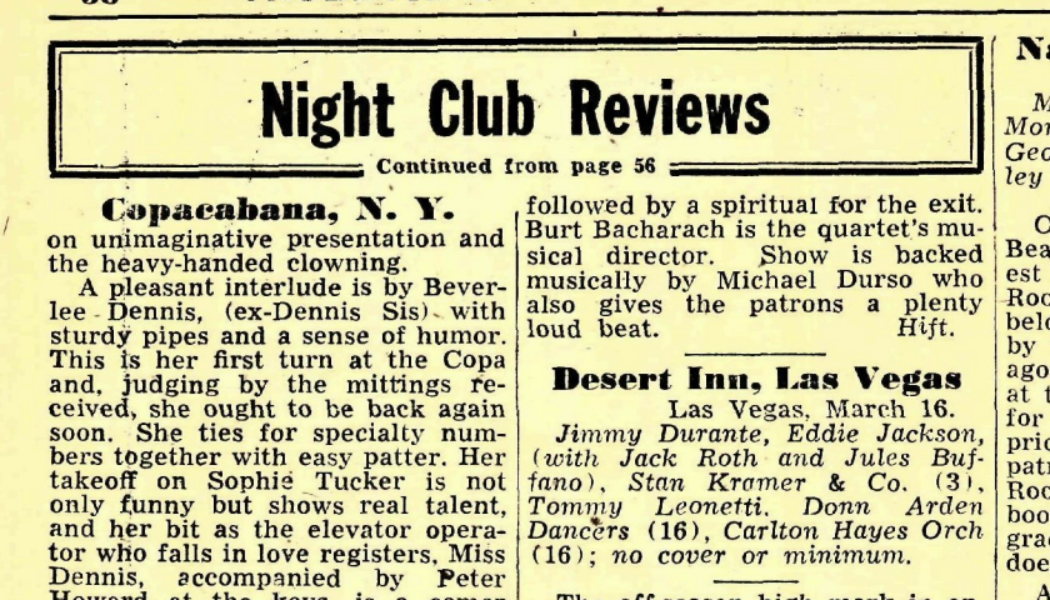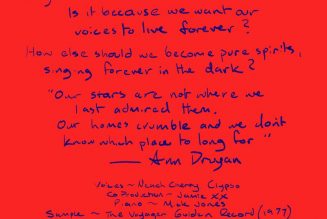From “Walk on By” to “The Look of Love” to “Raindrops Keep Fallin’ on My Head” to “The Blob,” Burt Bacharach composed indelible pop songs that became staples of the soundtrack of their eras.
The prolific tunesmith, who died Feb. 8 at age 94, grew to prominence early in his career by penning film scores and hits (with lyricist partner Hal David) for movies such as “Casino Royale,” “Butch Cassidy and the Sundance Kid,” “Alfie,” “What’s New Pussycat,” “After the Fox,” “Arthur” and “Night Shift.” And yes, Bacharach and lyricist Mack David (brother of Hal) wrote the late 1950s novelty hit “The Blob,” which stemmed from the 1958 horror comedy that helped propel Steve McQueen to stardom.
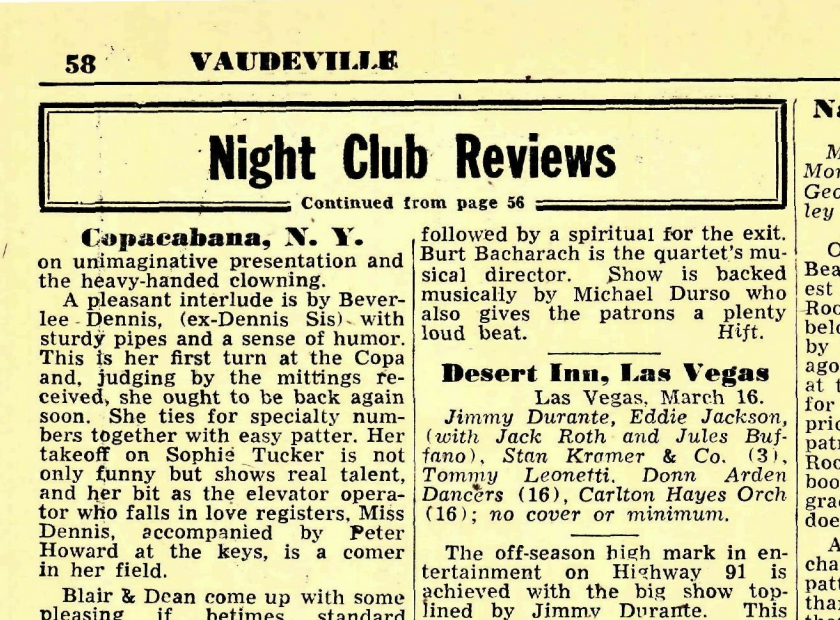
From the March 24, 1954, edition of weekly Variety
Bacharach’s first reference in Variety came in the March 24, 1954, edition of weekly, when he was name-checked as the musical director for the Ames Brothers, as part of a review of a musical revue at New York’s Copacabana club.
More than a year later, Bacharach got a little bit more ink in a review of Imogene Coco’s cabaret show at the Beverly Hilton’s Bali Room. “Burt Bacharach handled direction of Peter Matz’ arrangements with evident musicianship,” as our reviewer observed in the Dec. 5, 1955, edition of Daily.
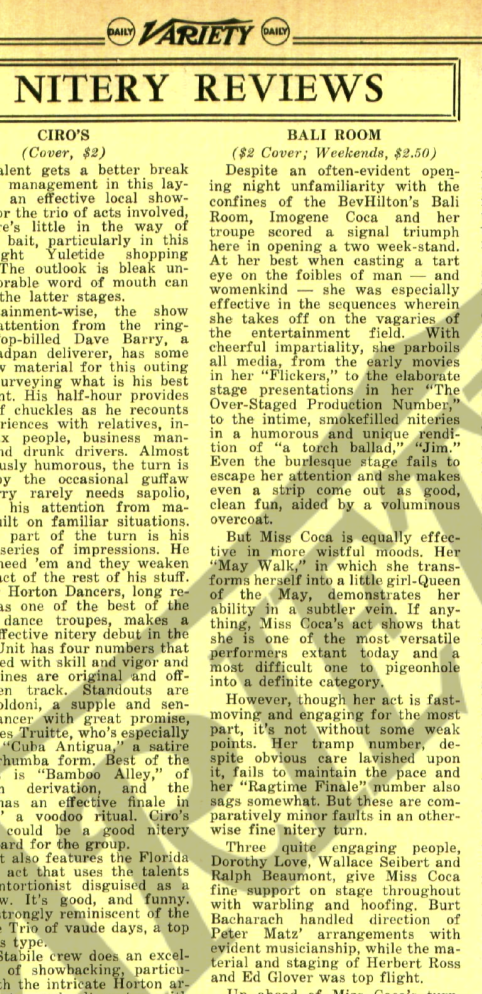
From the Dec. 5, 1955, edition of Daily Variety
A few months later, Bacharach was on the move with the mouthy Martha Raye as she embarked on a tour of U.S. military installations in the Caribbean. We ran a surprisingly long (for those days) report on the show, datelined from San Juan, Puerto Rico, in the Feb. 22, 1956, weekly edition, that praised Bacharach’s piano work behind singer Paula Stewart, who was Mrs. Bacharach at the time. “Miss Stewart is a dazzler with a bosom not lost on the Marines,” we wrote. More significantly, our reporter knew talent when he saw it, calling Bacharach “an accomplished youngster who’s headed for the bigtime.”
Two years later, in January 1958, Bacharach was working with Marlene Dietrich as part of her stage show at the Sahara in Las Vegas. She must’ve really liked him because she decided to delay her “Havana saloon date” while Bacharach got himself un-hitched in Sin City, as Army Archerd reported in his “Just for Variety” column in the Feb. 4, 1958, edition of Daily.
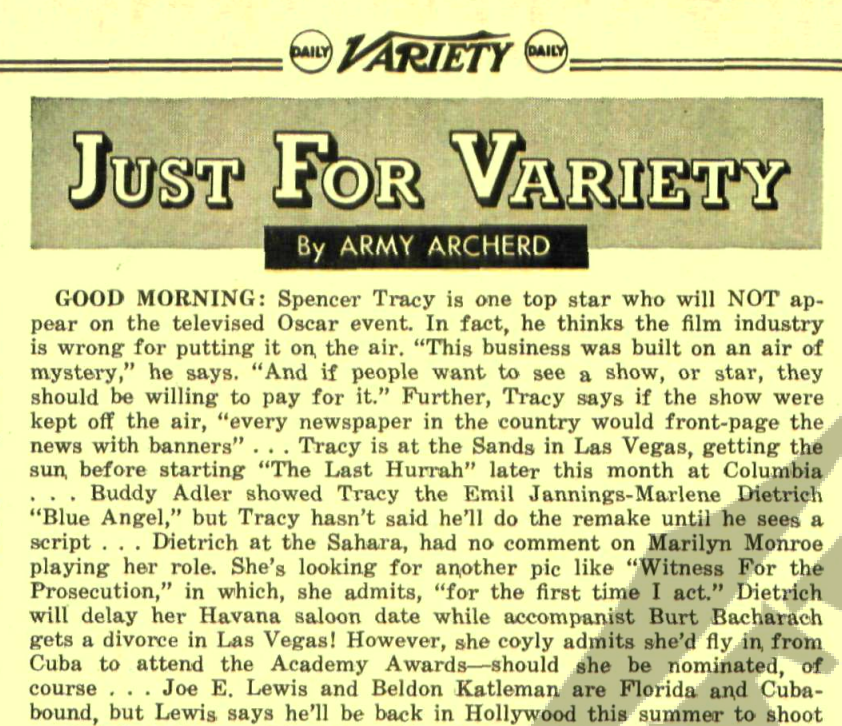
From the Feb. 4, 1958, edition of Daily Variety
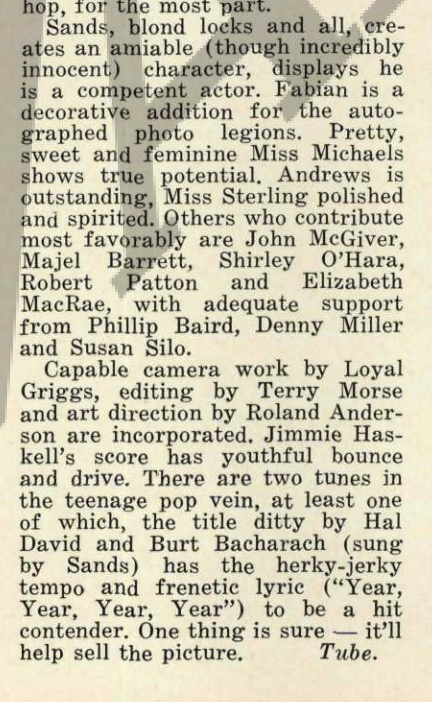
From the June 2, 1961, edition of Daily Variety
By 1961, Bacharach and David were getting into the movie business, writing the title track to the Fabian-Tommy Sands starrer “Love in a Goldfish Bowl.” “There are two tunes in the teenage pop vein, at least one of which, the title ditty by Hal David and Burt Bacharach (sung by Sands) has the herky-jerky tempo and frenetic lyric (“Year, Year, Year”) to be a hit contender. One thing is sure – it’ll help sell the picture,” we wrote in the review in the June 2, 1961, edition of Daily.
Bacharach and David got increasingly positive notices for their work as the Camelot years wore on. By 1963, Bacharach was signed as a solo artist to Kapp Records, and he and David were penning hit after hit for a most amazing instrument: the voice of Dionne Warwick.
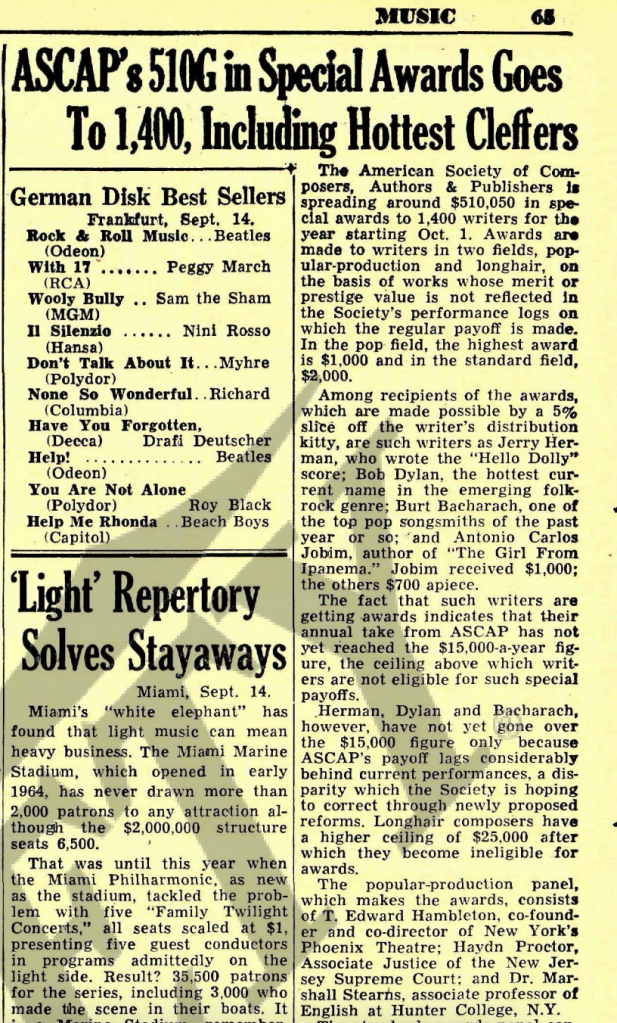
From the Sept. 15, 1965, edition of weekly Variety
Fast forward two years and Bacharach was winning cash from ASCAP for his success. He was in good company, picking up a $700 prize alongside Broadway legend Jerry Herman, bossa nova pioneer Antonio Carlos Jobim and Bob Dylan, who we described as “the hottest current name in the emerging folk-rock genre” in the Sept. 15, 1965, edition of weekly.
Whoa, whoa, whoa – it’s obvious from the pages of Variety that Bacharach’s career hit a new level with the success of the song “What’s New Pussycat” from the 1965 Peter Sellars-Peter O’Toole comedy of the same name. Nor did it hurt the career of Tom Jones, the charismatic Welshman who sang it for the film’s soundtrack.
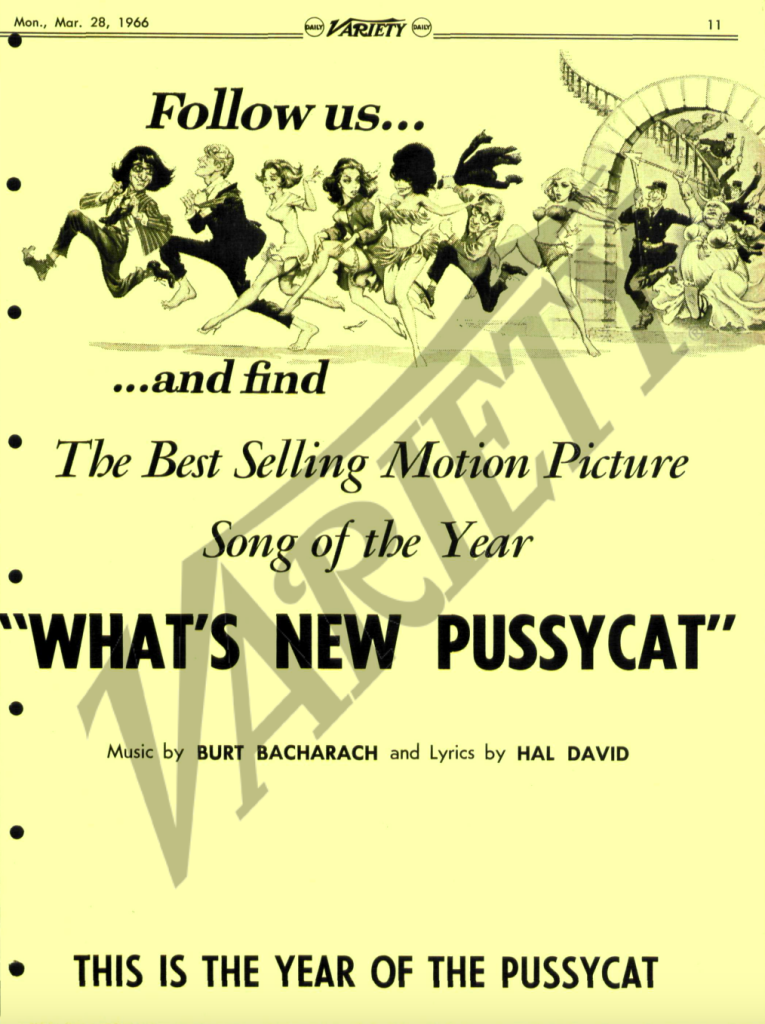
From the March 28, 1966, edition of Daily Variety
From there, Bacharach and David had a run of hits that captured the 1960s zeitgeist and rivaled the chart success of Lennon and McCartney, including “Alfie,” from the 1966 Michael Caine starrer of the same name. In fact, what it was all about was acclaim for Bacharach and David, including a hat-tip from the Rocky Mountain Motion Picture Assn., which let the showbiz world know by taking a page in the March 22, 1967, edition of Daily.
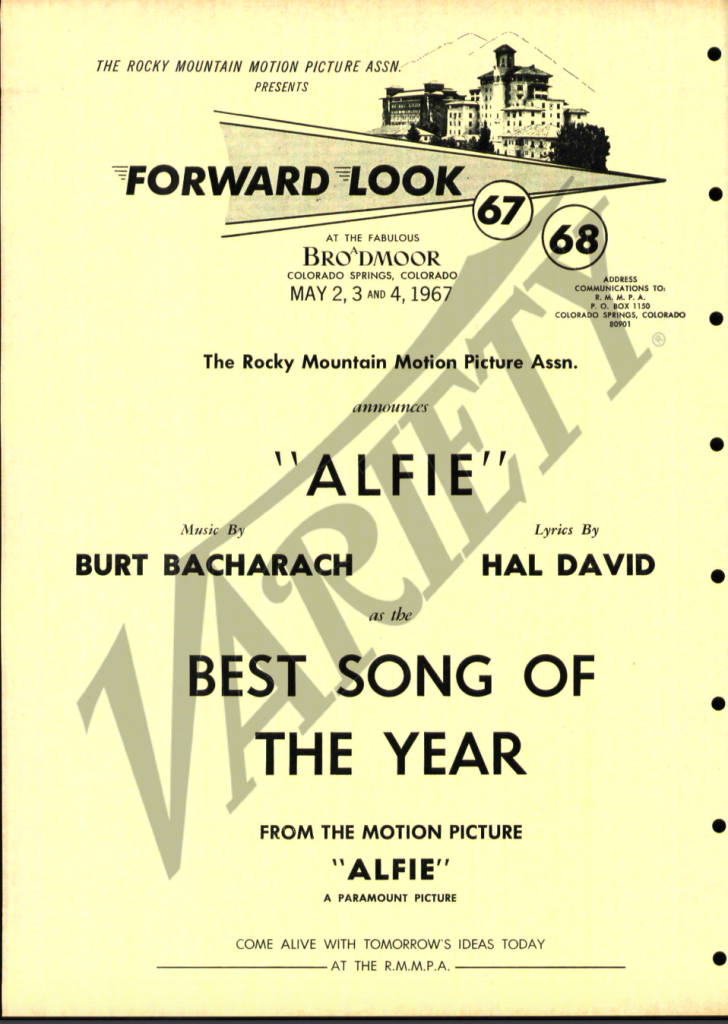
From the March 22, 1967 edition of Daily Variety
“The Look of Love” from 1967’s “Casino Royale” was another smash – and just look at the range of artists who covered the tune in a short time. The list runs the gamut of Nina Simone, Stan Getz, Liza Minnelli, Dusty Springfield and the Mystic Moods Orchestra.
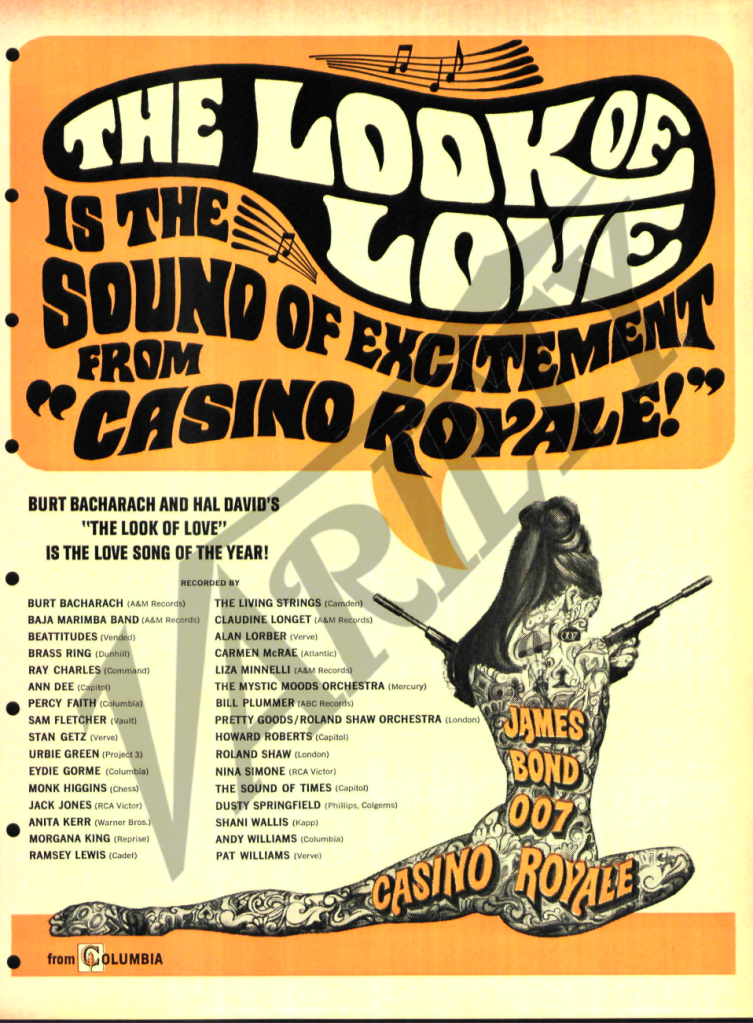
From the Jan. 29, 1968 edition of Daily Variety
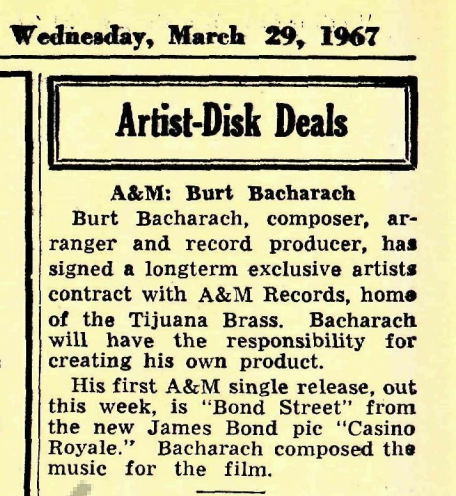
From the March 29, 1967, edition of weekly Variety
The year 1967 was also a milestone for Bacharach because it marked his signing with A&M Records. The house that Herb Alpert and Jerry Moss built (on La Brea Avenue) would become Bacharach’s longtime label home, as we first reported in the March 29, 1967, edition of weekly.
As his star skyrocketed, Bacharach did not ignore national politics. He was among the signatories to an ad declaring showbiz’s support for Hubert Humphrey’s 1968 presidential bid. The National Entertainment Committee for Humphrey-Muskie – co-chaired by no less than Alan King, Nancy Sinatra, Aretha Franklin and Jimmy Durante – declared their support for the Senator from Minnesota (and his running mate Edmund Muskie) in a full-page ad in the Oct. 9, 1968, edition of weekly.
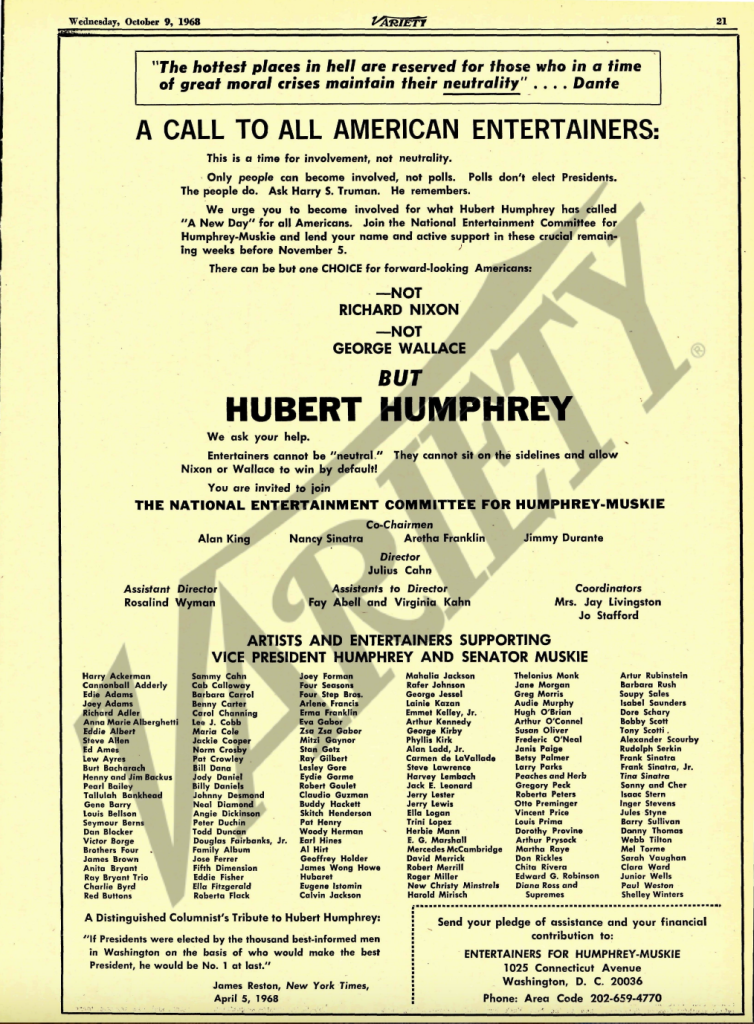
From the Oct. 9, 1968, edition of weekly Variety
Hot as Bacharach and David were at that time, the pair were destined for even greater heights in 1969 with their work on George Roy Hill’s “Butch Cassidy and the Sundance Kid.” You couldn’t escape the song “Raindrops Keep Fallin’ on My Head” by B.J. Thomas, and it was certainly a rainmaker for Bacharach and David. The two won the Oscar for original song, and Bacharach claimed a second Academy Award for the film’s original score, as lauded in a congrats ad from A&M in the April 13, 1970, edition of weekly.
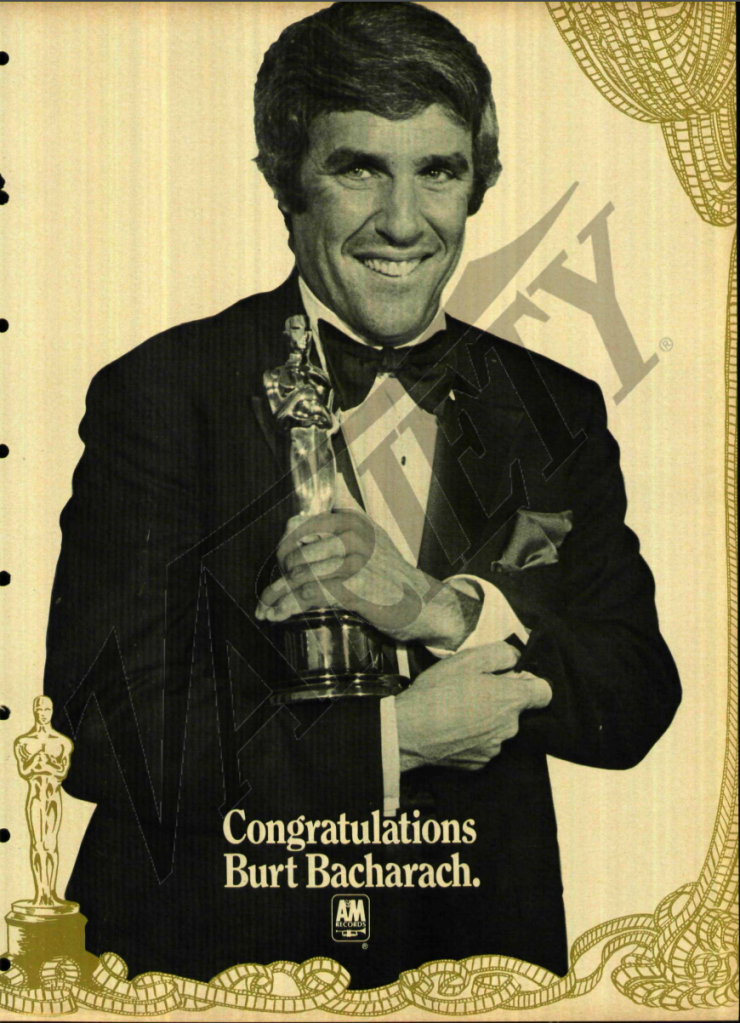
From the April 13, 1970, edition of Daily Variety
The hits kept on coming through most of the 1970s for Bacharach, as did our coverage of his amazing life and work.
What shines through in his many mentions in Variety is how much Bacharach clearly loved to work – as a composer, arranger, musician, producer and singer. In 1972, at the top of his game, Bacharach was saluted in an ad in the April 19 edition of weekly that featured a “personal thanks” from Marge and Irv Cowan for the record-setting returns he delivered with his stint performing at Diplomat Resorts and Country Club in Hollywood, Fla.
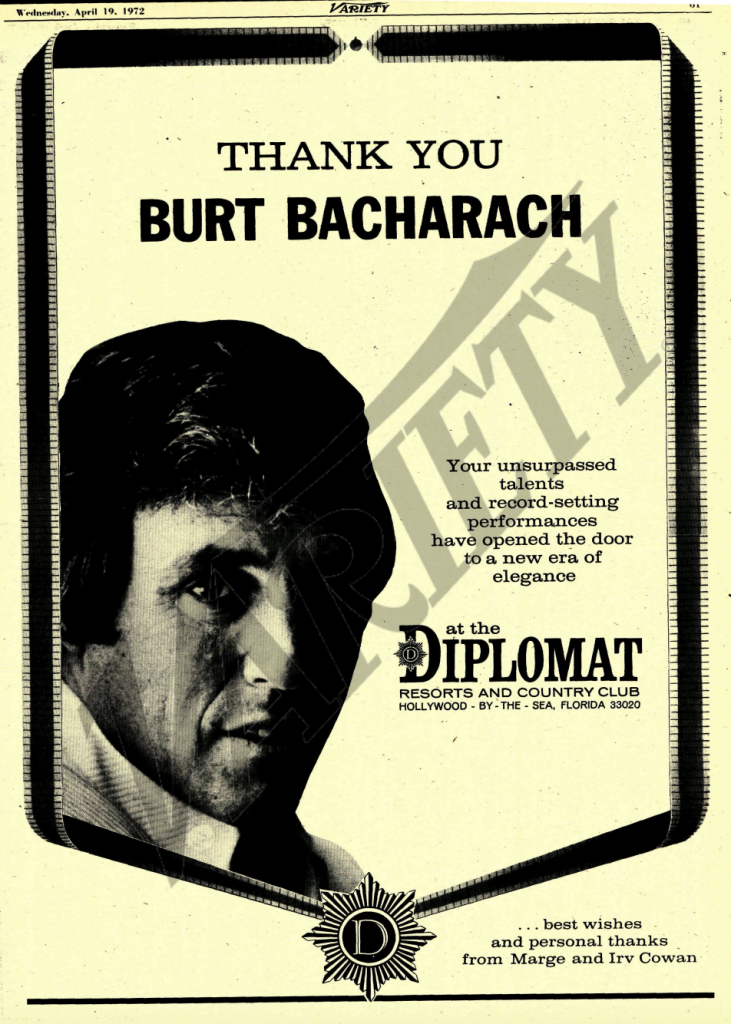
From the April 19, 1972, edition of weekly Variety
Surely, the Oscar-winning composer who was respected across the musical spectrum didn’t really need to play a Florida country club gig at that time. But Bacharach turned pro in an era when a musician’s only answer to an offer of employment was “how much and when.”
So, a half-century later, let us join the Cowans and millions of other Bacharach lovers around the world with a farewell salute to a tunesmith’s tunesmith. Evident musicianship, indeed.
(Pictured top: Marlene Dietrich and Burt Bacharach in the U.K. in 1964)
